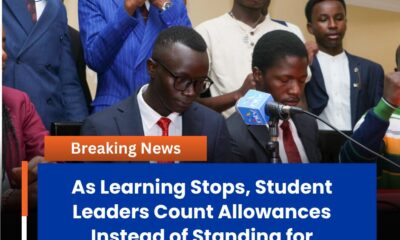Event Director of the World Rally Championship (WRC) Safari Rally, Jim Kahumbura, faces a Herculean task in marshalling his troops to re-engineer his organisational acumen to meet Olympic or Fifa World Cup standards in all aspects, ranging from publicity, logistics, management, hospitality, and safety.
Kahumbura has the time to achieve the best next year after the Safari, like many FIA WRC events, have had to be rescheduled due to the Covid-19 pandemic.
But Jim, as his peers are used to calling him, is used to working better under crisis since his heyday as a rally driver, although in today’s world, the board of a corporate entity would disapprove of a chief executive officer tangling with cars on the weekend and running a bank on weekdays.
But that is exactly what Kahumbura perfected in the mid-90s when he would multi-task, racing cars and managing the Prudential Bank which has since collapsed.
Kahumbura’s taste for cars was also awesome. His Safari Rally toys were two factory-prepared Toyota Celica ST185 models, race-tuned by the then Toyota Team Europe (TTE) in Germany.
The Late Jonathan Toroitich and Ian Duncan were the only other Kenyans to have sampled these TTE cars.
Like Kahumbura, Toroitich bought his machine while Duncan was always supported by the factory and local Toyota franchise. Kahumbura’s car was, however, in Group N or upgraded standard showroom version.
Those were the days Toyota dominated the Safari, winning in four years in a row (from 1992 to 1995) and making it virtually impossible for the opposition to soil their tuff after Lancia ended their Safari programme in the early 90s.
It was rumoured that Toyota was spending upward of Sh750 million on the Safari Rally. Their cars and equipment were airlifted by 747 Jumbo jet from Cologne.
The team of over 250 personnel was flown in by another airplane.
People like Kahumbura would always get a windfall in getting spare parts after every Safari.
Kahumbura, always navigated by Dave Macharia, Newton Njiru and Nick Theuri, was also able to bring together a competent team of mechanics and logistic experts, led by former Gatanga Member of Parliament Peter Kenneth as the team manager.
These were the golden days of African drivers whose propensity to deliver results confirmed human beings are evenly talented and the only drawback was lack of resources.
In pole position was Patrick Njiru. Others were Toroitich, Phineas Kimathi, Kahumbura, John Ngunjiri, Gregory Kibiti, and Jimmy Wahome.
Surprisingly, they were able to dominate the first 10 top positions in the Kenya National Championship.
For Kahumbura, money was not an issue. However, he learned that self-discipline, resolve, and focus were the hallmarks of every sportsperson.
His finest hour came in the 1997 Safari Rally when he finished 15th overall and as winner of the Group N category.
Two years earlier, Kahumbura had also won the Group N category but that year, the Safari was counting towards the F2 Category WRC.
Today, he laments that current rally drivers are not able to market themselves.
The drivers of his generation matched their success with the serious commitment for their sponsors as well as developing a relationship with the media.
Kahumbura retired in 2001 after finishing 10th in the BP Visco Rally, and immediately moved into management, first as chairman of the Kenya Motorsport Club and later as chairman of the Kenya Motor Sport Federation.
His team started fighting for the return of the Safari back to the WRC in 2003 soon after the Narc party of President Mwai Kibaki took over the leadership of the country, and set aside Sh36 million for the initiative.
But as fate would have it, it took 18 years to realise the dream we are about to witness next month unless Covid-19 decides otherwise.
[email protected]

 General News6 days ago
General News6 days ago
 Politics5 days ago
Politics5 days ago
 Business News4 days ago
Business News4 days ago
 General News4 days ago
General News4 days ago





